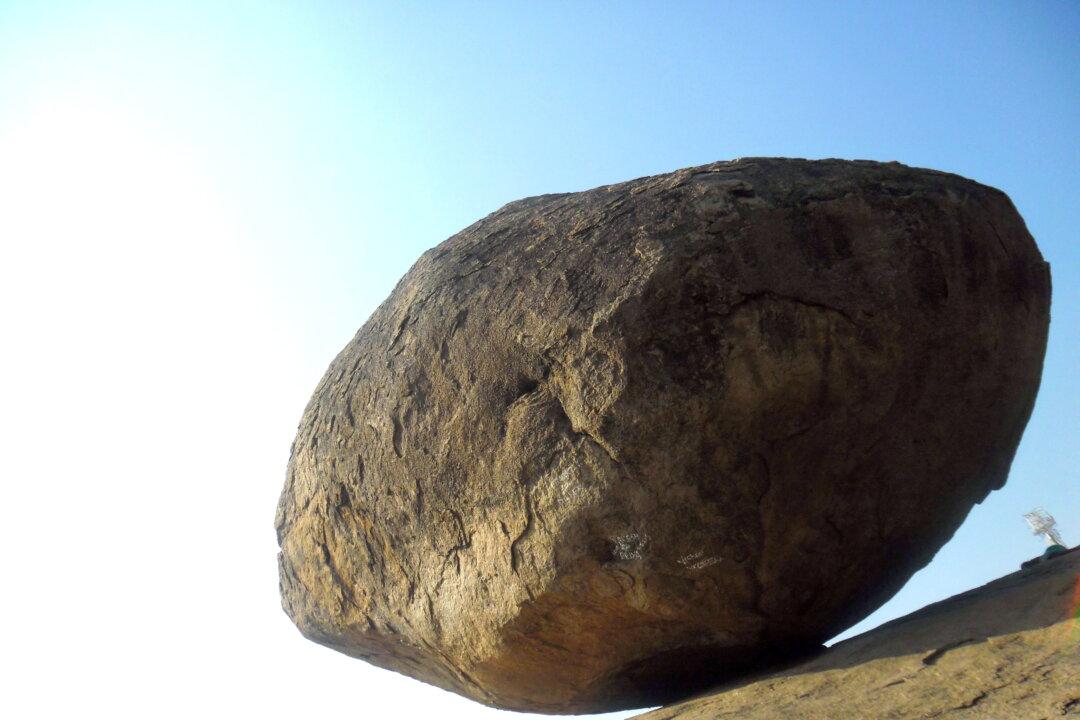The Krishna Butter Ball is a large boulder located in Mahabalipuram, a town in the Kancheepuram district in the southern Indian state of Tamil Nadu.
It is estimated to weigh over 250 tons, and measures about 19.6 feet (6 meters) in height and 16.4 feet (5 meters) in diameter. It sits on a 45-degree slope.
A tourist attraction, this giant boulder balances on a small surface area on the slope of a hill. It has neither slid down this hill, nor budged when attempts were made to move it.
Moving Attempts
One of the earliest known attempts to move the boulder is said to have been made during the time of Narasimhavarman, a Pallava king who reigned during the 7th century A.D.
As the story goes, the king wanted to move the divine rock so that he could save it from the hands of sculptors. In spite of his good intentions, the boulder would not budge, and the king had to give up his plans.




